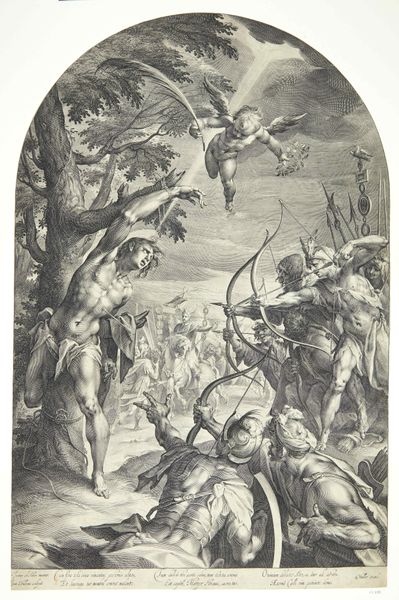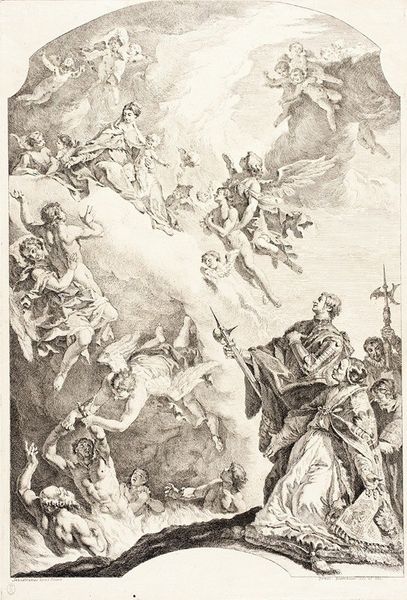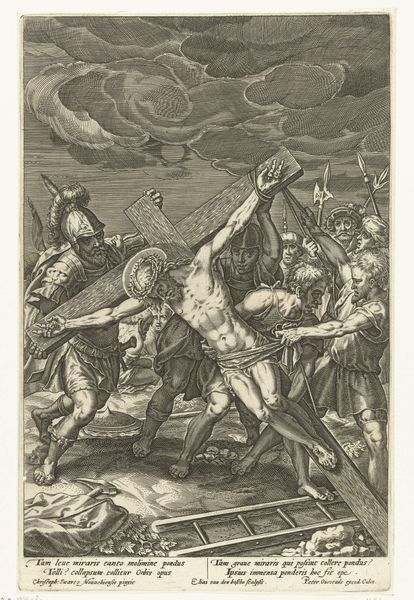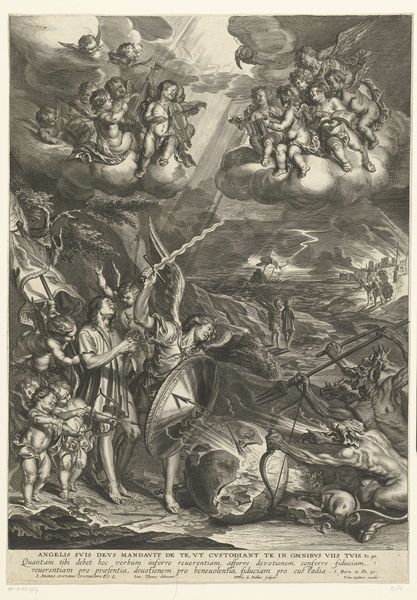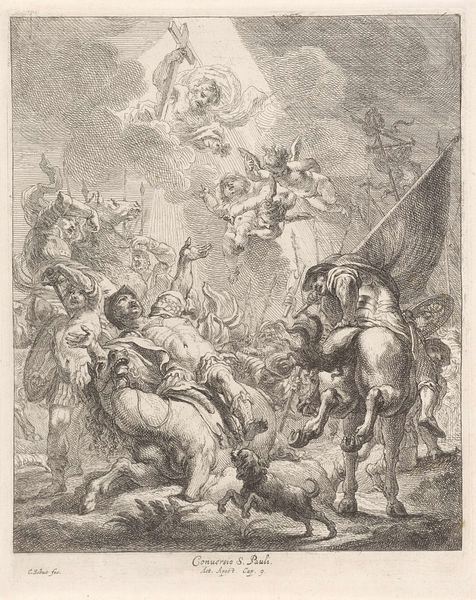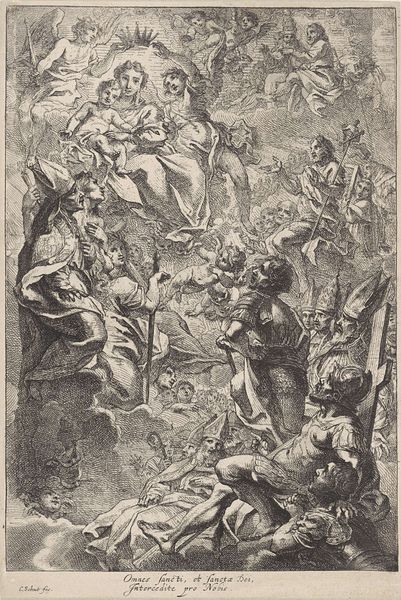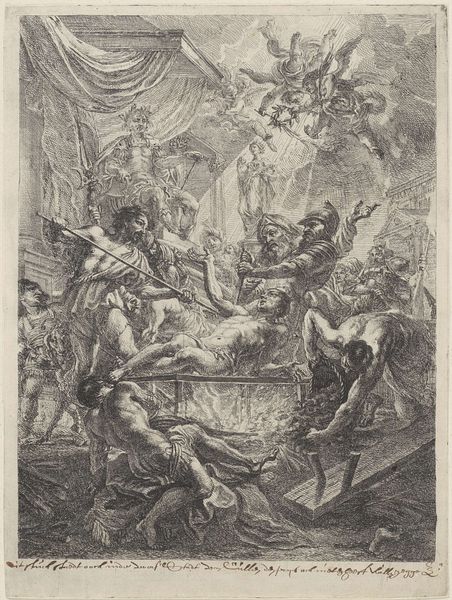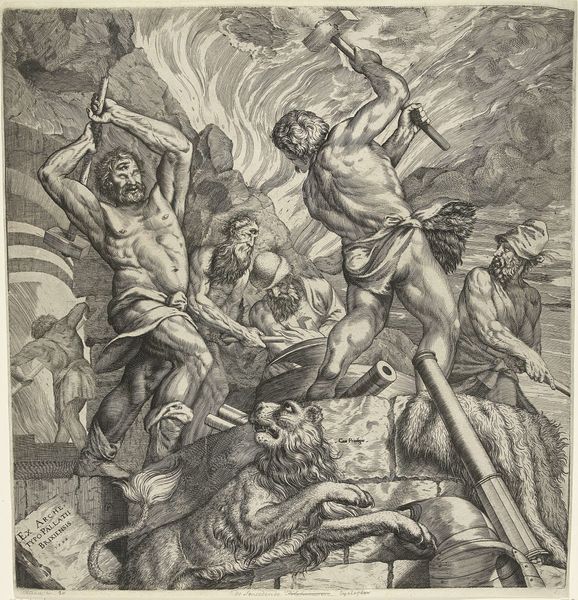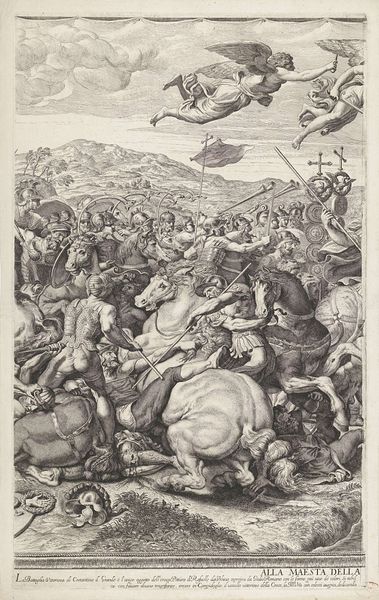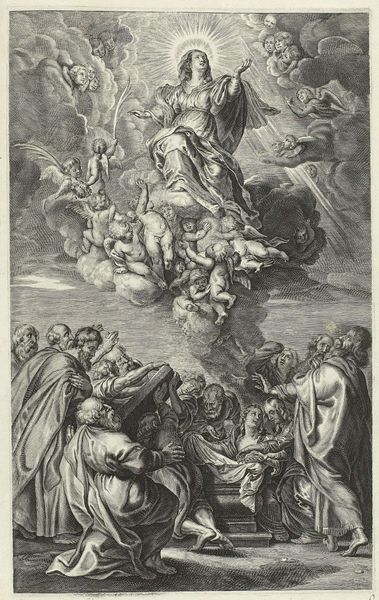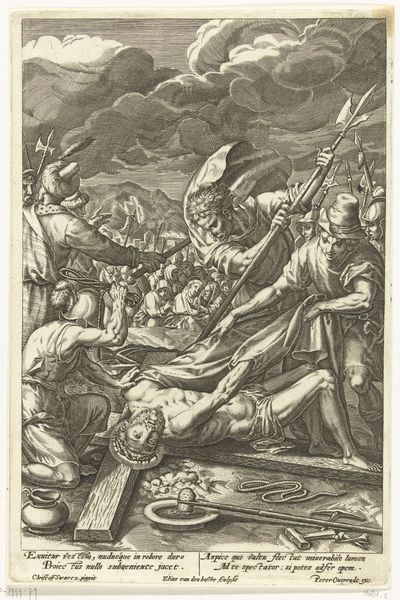
engraving
#
baroque
#
figuration
#
line
#
history-painting
#
engraving
Dimensions: height 600 mm, width 445 mm
Copyright: Rijks Museum: Open Domain
Editor: So, this is "The Torture of St. Livinus," an engraving made in 1657 by Cornelis van Caukercken, currently residing at the Rijksmuseum. It’s incredibly detailed, but also quite disturbing given the graphic depiction of torture. What elements stand out to you as you examine this work? Curator: What interests me is considering this engraving as a *produced object*. Who commissioned this, and why? Was it a single, wealthy patron, or were prints sold and distributed more widely? These things impacted the materials available to van Caukercken, and also its accessibility. How does the act of circulating images shape the narratives and power structures it represents? Editor: That’s an interesting angle. I was primarily focused on the artistry of it all. Do you mean like, this image of torture almost becomes a commodity itself? Curator: Precisely! Consider the Baroque style – the dramatic light, the exaggerated figures. This theatricality is meant to impress, to evoke emotion, and even awe. Now, what materials made this possible? The labor to create the engraving on the printing plates… These engravings aren’t necessarily “high art”, but instead they make historical and religious scenes reproducible and saleable, to be experienced, handled, and even consumed! Editor: I never considered it like that before, viewing art this way seems to uncover a completely different layer. Do you think the intent of the engraver is almost secondary? Curator: Not necessarily secondary, but the intent exists within a system. The materials, the means of production, and the social context – they all dictate what art is, who gets to see it, and how it’s interpreted. It challenges that typical idea of the singular "artistic genius". Editor: So thinking about what materials are made available or accessible to create art is an artform by itself? Curator: Indeed. Hopefully, thinking this way provides a wider approach into understanding and studying art. It did for me. Editor: Thanks, I am certainly coming away with a whole new way of understanding.
Comments
No comments
Be the first to comment and join the conversation on the ultimate creative platform.
